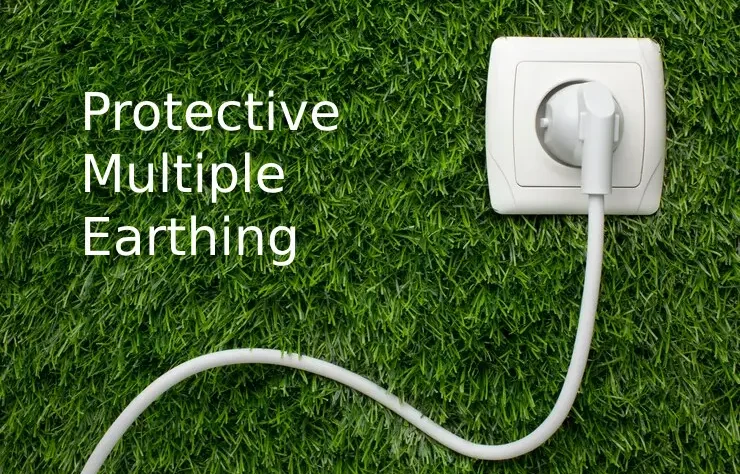Protectionive Multiple Earthing (PME) is the most important principle in electrical engineering. It guarantees the security and stability of electrical systems, especially within commercial and residential structures. PME is an approach to earthing in which the earth and neutral conductors are integrated into the electrical distribution network, offering an effective method of protecting from electric shock and assuring that the stability of the power source.
What is Protective Multiple Earthing (PME)?
Protectionive Multiple Earthing (PME) is a procedure employed in electrical installations, where the neutral conductor gets earthed at several places throughout its length. This method is mostly utilized in low-voltage distribution systems which are typically used in residential and small companies. PME is a PME technique is intended to improve the security of electrical equipment by providing a the most reliable and efficient route for fault currents while reducing the possibility of electrical shock.
In the case of a PME system in a PME system, the neutral conductor will be connected to the earth at several places, most often at the point of origin (substation) and also at various locations along the distribution system. This ensures that malfunctioning currents are able to be dissipated to the earth, decreasing the possibility of a difference between neutral and earth conductors, and keeping dangerous voltages out of appearing in exposed metal components.
How Does PME Work?
The Protective Multiple Earthing (PME) is a method of ensuring that the neutral wire of the electrical system is grounded in many points within the distribution system, which assists in keeping it in the vicinity of its Earth potential. It is accomplished by joining earth and neutral conductors in a single neutral as well as Earth (CNE) conductor that carries return current as well as fault currents. This CNE conductor is grounded at different locations, like the supply substation as well as along the entire network, which provides an easy route that allows fault currents to be able to disperse into the earth. This reduces the chance of dangerous voltages being emitted on conductors, increasing the security and stability in the system’s electrical components.
Benefits of Protective Multiple Earthing
The PME system comes with a number of advantages and makes it a popular alternative for electrical installations that require low voltages:
- Improved Safety: PME significantly reduces the danger of electric shock because electrical fault currents are safely dissipated in the earth, and thereby keeping dangerous voltages off the exposed parts of metal.
- Better Reliability: Its many earthing points of the PME system focus on providing the stability and consistency of an earth reference to ensure the stability of the electrical supply while minimizing the danger of voltage fluctuation.
- Cost-effective: PME systems generally are cheaper over other methods of earthing, like separate earth conductors, thanks to the fact that they do not require extra conductors as well as equipment.
- Easy Installation Utilizing combined earth and neutral conductors makes the installation process and reduces the difficulty of wiring as well as the chance of making mistakes during installation.
Possible Challenges and Issues
Although PME has many advantages however, it also has certain challenges and issues to take into consideration:
- Voltage Rise If there’s a fault, there might occur a minor voltage rise across the neutral conductor which can pose a threat when not appropriately managed. A proper bonding process and the correct methods of installation are vital in order to reduce the risk.
- Regulation Compliance: PME systems must be in compliance with certain regulations and standards, like that outlined by the Institute of Electrical and Electronics Engineers (IEEE) or local electrical codes. It is essential to warrant that your installation is in compliance with these standards to ensure security and dependability.
- Maintenance Maintenance on a regular basis for PME system is required in order to warrant that earthing connections are in good working order and for the system to continue to operate as it was intended. It is also necessary to check the quality of the earth electrodes as well as bonding connections.
Conclusion
The Protective Multiple Earthing (PME) is an essential element of safety in electrical installations that is essential to protect property and people from dangers posed by electricity. Through the combination of earth and neutral conductors, and making sure there are several earthing points PME is a safe and reliable method of failure protection for low voltage distribution systems. But careful analysis of practices for installation, regulatory monitoring, and regular maintenance is vital to maximise the advantages from PME and warrant that electrical equipment.
